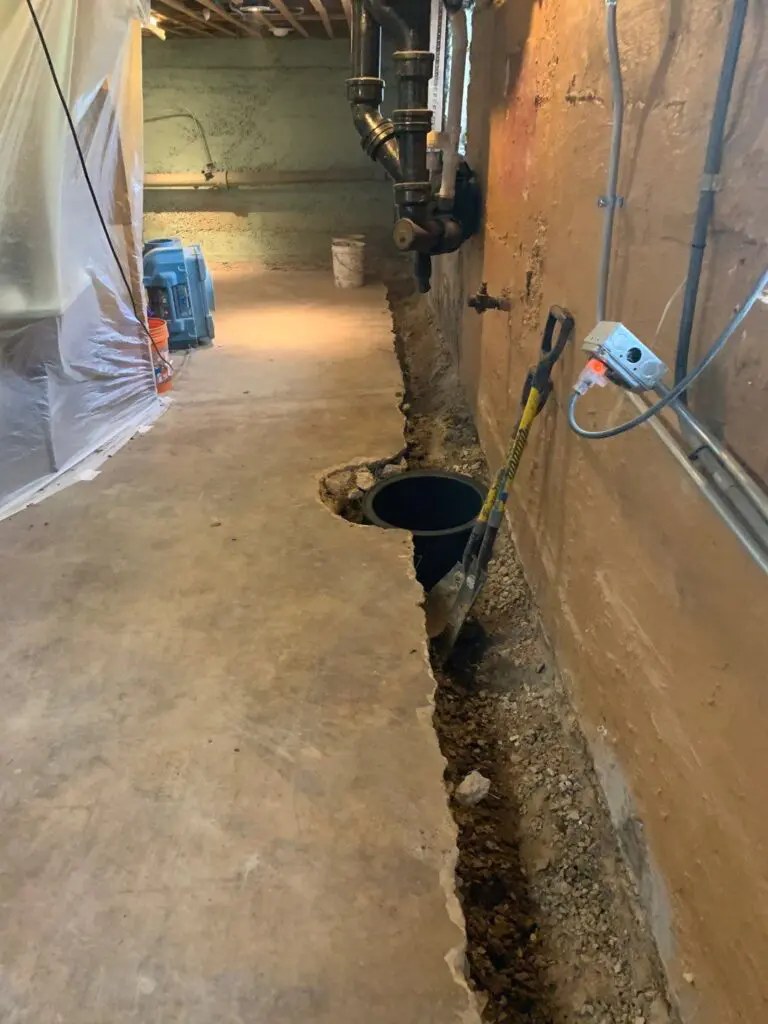Have you ever walked into your basement or noticed a damp spot on your concrete floor and wondered, “How did that get there?” Many homeowners grapple with the issue of moisture seeping through their concrete floors, whether it’s a persistent dampness or visible water damage. This dampness can cause more than just an unpleasant feeling underfoot; it can lead to mold growth, structural damage, and even health problems. But don’t despair! This article will equip you with the knowledge and strategies to tackle this common issue and enjoy a dry and healthy home.

Image: viewfloor.co
Understanding the source of moisture is crucial before taking any action. Is it rising damp, originating from the ground? Or is it water infiltration from roof leaks, faulty plumbing, or poor drainage? Identifying the culprit helps you choose the most effective solution. This article will delve into the various causes of moisture in concrete floors and explore a range of proven methods to stop it in its tracks.
Causes of Moisture in Concrete Floors
1. Rising Damp
Rising damp occurs when moisture from the surrounding soil travels upward through the concrete floor, driven by capillary action. This is common in basements or ground-level floors where the concrete slab sits directly on the ground.
2. Water Infiltration
This occurs when water enters through cracks, gaps, or poor seals in the concrete floor. Common causes include:
- Faulty plumbing or leaky pipes
- Poorly installed or damaged gutters
- Cracked or damaged exterior walls
- Inadequate drainage around the foundation

Image: dragon-upd.com
Preventing Moisture in New Concrete Floors
Preventing moisture problems in the first place is always preferable. Here’s how to ensure a dry concrete floor when building or renovating:
1. Proper Foundation Construction
Ensure the foundation is properly constructed with a moisture barrier beneath the concrete slab, such as a layer of polyethylene sheeting.
2. Adequate Drainage
Ensure the surrounding ground slopes away from the foundation to prevent water pooling near the building. Install proper drainage systems and downspouts to direct rainwater away from the foundation.
3. Moisture Vapor Barriers
Install a moisture vapor barrier underneath the concrete slab to block moisture from rising up. These barriers are typically made of polyethylene sheeting. This is particularly crucial in areas with high humidity or soil moisture levels.
4. Waterproof Concrete Mix
Use a waterproof concrete mix that incorporates admixtures to enhance resistance to moisture penetration. The mix should be poured and sealed properly to prevent any leaks or cracks in the slab.
Solutions for Existing Moisture Problems
If you’re already dealing with moisture in your existing concrete floor, don’t despair. There are effective solutions to address this issue, both temporary and permanent:
1. Dehumidifiers
This is a temporary solution to reduce humidity levels in the air, minimizing the amount of moisture absorbed by the concrete floor. They are particularly useful for basements.
2. Concrete Sealants
This is a simple and effective solution to block moisture from penetrating the concrete. Several types of sealants are available, including acrylic, epoxy, and polyurethane, each offering varying levels of durability and moisture resistance. They are best applied to dry concrete, so any dampness should be dealt with first. Once applied, ensure adequate ventilation to allow the sealant to dry completely.
3. Waterproofing Membranes
These membranes offer a more robust barrier against moisture penetration. They can be applied to the existing floor or installed as a separate layer underneath the slab. These membranes are particularly useful in areas with high moisture levels or where rising damp is a significant concern.
4. Installing a New Floor
In cases of severe moisture damage or where the concrete floor is beyond repair, replacing it with a new floor is necessary. Consider using materials known for their moisture resistance, such as tile, engineered hardwood, or vinyl flooring.
Preventing Mold Growth
Once the moisture is addressed, it’s crucial to prevent mold growth. Mold thrives in damp environments and can pose health hazards. Consider these steps:
1. Ventilation
Improve ventilation in the affected area to reduce humidity and discourage mold growth. Install fans or open windows to allow air circulation.
2. Cleaning and Drying
Thoroughly clean and dry any damp areas, including wiping down walls and removing damp furniture. Use a disinfectant to kill any existing mold spores.
3. Mold Removal
If mold growth is significant, it’s best to consult a professional mold remediation specialist. They have the expertise and equipment to safely remove mold and prevent future growth.
How To Stop Moisture Coming Through Concrete Floor
Conclusion
Stopping moisture from coming through your concrete floor requires a combination of preventive measures and targeted solutions. Whether it’s rising damp or water infiltration, understanding the source of the problem is crucial for choosing the right approach. By implementing the techniques outlined in this article, you can banish the dampness and create a healthy and comfortable living space for yourself and your family. Remember, moisture control is an ongoing process. Regularly inspect your floors for signs of dampness and address any issues promptly to prevent them from escalating. And if you’re unsure about any aspect of the process or have a complex problem, don’t hesitate to consult with a professional contractor or building expert.






